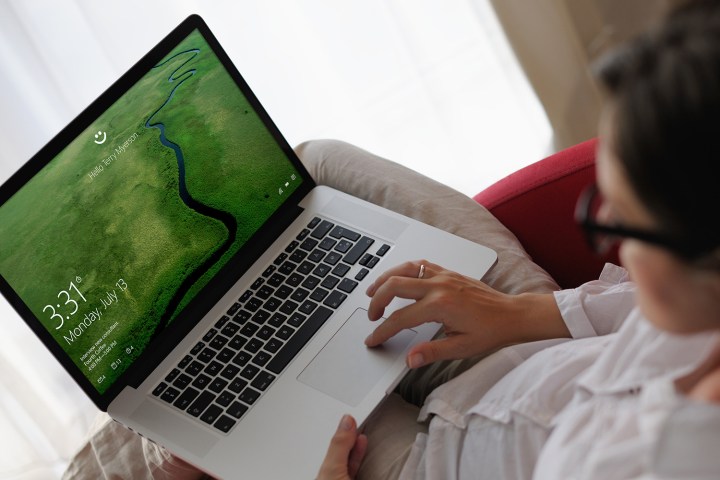I love my MacBook Pro, but the fact that it’s gone this long without Face ID still boggles the mind. The feature first came to iPhones in 2017, while Windows Hello facial authentication kicked off in 2015. That means we’re likely going into 2025 with MacBooks being a full decade behind Windows laptops.
So yes, on one hand, Macs are in desperate need of Face ID. On the other hand, based on how Windows Hello has played out on even the best laptops running Windows, I have one big concern about how it might be implemented.
The problem with Windows Hello
To understand what Face ID on the Mac could be like, we don’t need to look far. While Microsoft was ahead of the game, that doesn’t mean its implementation in Windows was perfect. Far from it.
The main problem is with performance. There’s nothing more frustrating than attempting to sign into an operating system, only to get rejected. In my time with Windows laptops that use facial recognition through the IR camera, it happened enough times to put me off.
Apple could, in theory, solve that biggest problem with Windows Hello fairly easy — namely thanks to the tight integration of hardware and software. That, I’m not concerned about. But there’s still one area they could stand out: incorporating both Face ID and Touch ID.
Although it’s possible for Windows laptops to have both a fingerprint reader and an IR camera, it’s become increasingly common for laptops to choose one or the other. In my experience, this is a detriment to the whole experience.
While facial recognition undoubtedly has a useful place in computing, a laptop display is often too far from you, especially when using it as a media player. The same applies when using it on your lap on a train, when in a car, or even when placed on a table that’s the wrong height.
A fingerprint reader solves each of these problems, while also providing a hardware backup if facial recognition fails and you don’t want to expose your PIN in public. These aren’t just hypotheticals: I’ve been through each of these scenarios over the past few months, and each time, my thought was the same.
A brief history of Face ID on the Mac

Since Face ID came to the iPhone X in 2017, Apple has been rumored to be working on bringing facial recognition to the Mac. Each year, we hear more rumors of expected dates, but like AirPower was eventually shuttered despite years of expectation, there’s still no guarantee that Apple will actually bring Face ID to the Mac.
Either way, we last heard about a Mac with Face ID back in September, with an App Store listing purportedly showing the outline of a Mac with the Face ID icon on it (as seen above). Depending on how you look at it, Apple made a mistake or is trolling its users.
Reliable Bloomberg journalist Mark Gurman previously revealed that Apple has tested Face ID on the Mac, and it was rumored to be part of the first M-Series MacBook. And yet, four years later, it’s been a no-show. Let’s not forget — Touch ID only came to Mac desktops in 2021, a full eight years after first launching on the iPhone.
While I do think that Face ID will eventually come to the Mac, when it does, I have just one request: to not get rid of Touch ID. After all, the introduction of Face ID on the iPhone X also meant the removal of Touch ID.
The best of both worlds

I use Touch ID on my Mac all the time, and one of its key benefits is compatibility with desktop accessories. Unlike Face ID, which would require your laptop enclosure to be opened. A MacBook Pro with only Face ID would essentially be my current MacBook Pro, except it would miss a feature that I rely on regularly.
My MacBook Pro spends 90% of its time in clamshell mode when connected to two 4K monitors, but I’ve paired it with a Magic Keyboard with Touch ID. This means I can still use all the biometric security features, but I don’t need to disrupt my current workflow. The popularity of this keyboard suggests that many users would also miss these features.
Sure, Apple could follow the PC-maker approach and launch a Face ID-compatible external camera that’s sold separately, or it could just keep Touch ID and give us the best of both worlds. As I said earlier, while many Windows laptops have chosen either Touch ID or Face ID, not all have made that mistake. The HP Elitebook x360, as an example, has both a fingerprint reader and IR webcam, allowing you to use whichever is more convenient. This is how it should be done.
Why Face ID on Macs excites me

As long as Apple keeps the Touch ID fingerprint sensor, I think there’s a lot of potential for Face ID on Macs. First, Apple’s approach to compatibility would solve many of the performance issues with Windows Hello while providing more security.
Microsoft has to cater to all PC-makers with Windows Hello, Apple just has to cater to its own needs. This is clear in each company’s current approach to facial recognition: Face ID is known for a more advanced map of your face, whilst Windows Hello has a lower barrier to entry making it easier for more companies to use the feature.
Microsoft’s approach also has one frustrating part: some machines using Windows Hello requires an additional confirmation. Instead of a seamless unlock straight through to your home screen like on the iPhone or iPad, your face has to be recognized by your laptop, and then you have to press enter to go to your desktop. This is also repeated with each action that uses facial recognition, making it an extra step that’s extremely frustrating.
Apple has a proven history of a streamlined approach to new biometric options, and if Face ID on a Mac is as good as it is on the iPhone, it will be a welcome addition to the MacBook’s capabilities.
Apple could also adopt this feature from a PC

Before switching to the Mac almost 15 years ago, I was a PC guy. Even when using a Mac, I tested a few PCs and helped manage family members’ machines as well. Each time I used Windows, it served as a reminder of why I preferred the Mac.
I say “preferred” because Windows PCs are now extremely competitive. Where I used a MacBook Air before, I now use a Lenovo Yoga Slim 7x. There are certain apps and experiences that I miss, but for the most part, it’s a comparable experience for all but the heaviest tasks, biometrics aside.
There is one feature the Yoga Slim 7i has that could have a place on a Mac: the camera shutter switch. Apple has never adopted such a feature but such a feature would tie into privacy messaging around Face ID (presumably even more secure) and privacy in Apple Intelligence.
It’s unclear when — or even if — we’ll see a Mac with Face ID, but if that time comes, I hope Apple also keeps Touch ID on the Mac. That’s something I’d pay a premium for.







